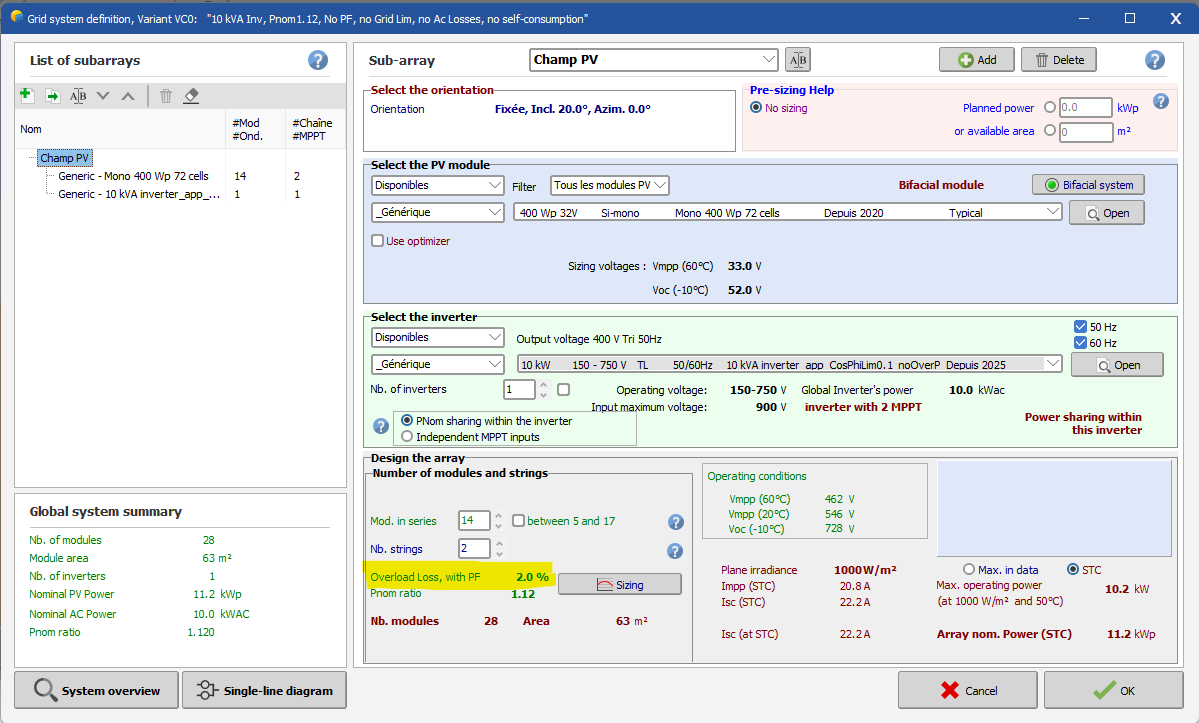Impact on the inverter overload conditions
Requesting the inverter to produce reactive energy may affect its overload conditions, depending on its nominal power specifications:
- either the nominal power \(P_{Nom}\) is specified in active power [kW]. In this case, the production of reactive energy doesn't impact the overload conditions and the active energy produced by the inverter is independent of the requested Power factor.
- or the nominal power \(P_{Nom}\) is specified as apparent power [kVA], so that the power limitation will occur for an active power $$ P_{Nom}(act)[kW] = P_{Nom}(app)[kVA] × \cos(\phi) $$ As \(P_{Nom}(act)\) is lower, the overload loss will be higher, and depends on the specified \(\cos(\phi)\).
In this second case, one should consider adapting the dimensioning of the DC / AC ratio to mitigate those losses. After you defined a requested power factor in the Energy management window, the estimation of the overload losses in the System menu will take into account its effect (denoted "Overload loss, with PF").
Note: Since the version 7.3.3, each inverter operates according to its own \(P_{Nom}\) specification, i.e. either defined as active or apparent. The derogation options "Force as apparent/active power" will force all inverters to operate under a single definition, without modifying the .OND file. This has been kept here for compatibility with old versions < 7.3.3, and for possible tests, but this is not recommended. This should only be used for tests.
